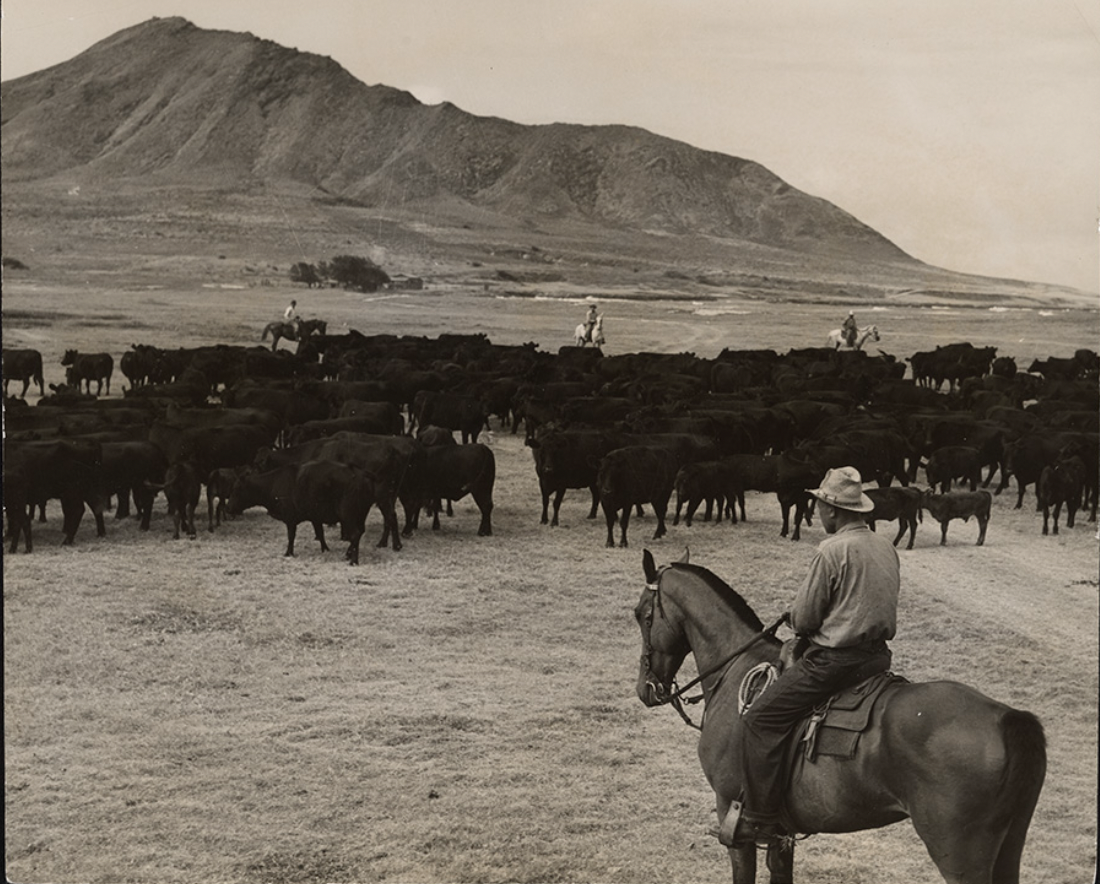Tropical Cowboys
The Origin of Paniolo Culture in Hawai’i
Photos courtesy of the Hawai’i State Archives
The first origins of ranching culture in Hawai’i began with the arrival of cattle from California in 1793; Capt George Vancouver presented a total of eight females and four mates on his second trip to Hawai’i.
Horses arrived on the islands shortly after, with the first horse bought over as a gift from Richard Cleaveland to King Kamehameha I in 1803.
King Kamehameha I placed a kapu on the gifted animals, meaning they weren’t allowed to be harmed or slaughtered, before setting them free to roam.
The kapu placed on the undomesticated cattle led to a population explosion throughout the late 1700s to early 1800s and by 1820 Hawai’i was home to a record 15,947 free-roaming cattle.
King Kamehameha III acknowledged the issue the unruly cattle were creating, and as the early 1800s economic landscape of Hawai’i was dominated by trade markets (mostly Sandalwood), Kamehameha III realised the cattle’s hides and meat could be used for trading.
In 1823, King Kamehameha III invited the first Mexican-Spanish Vaqueros (mounted livestock herders) to Parker Ranch to educate those working there on livestock management and techniques.
Due to the language barrier, the Hawai’ians pronounced espanoles as ‘paniolos’ which became the pidgin word for livestock handlers.






Photos courtesy of the Hawai’i State Archives
They introduced techniques such as roping, herding, and breeding alongside introducing new music styles, clothing designed for cattlemen, and ranching culture.
This led to the further development of Paniolo culture, a blend of what they’d learned from the Vaqueros and their own knowledge which led to popular songs such as: “Adios Ke Aloha,” and new riding techniques such as po’o wai u where the Paniolo secures a cow by tying it to a tree.
As the commercial value of cattle and livestock began to increase, so did the need for Paniolos, and by the turn of the next century, the Paniolos had become highly recognised for their skills.
Paniolo Ikua Purdy secured this title in 1908, when he won the world rodeo steer-roping championship in Wyoming and as a result, was inducted into the American National Cowboy Hall of Fame.
Today, horses and cattle are still prevalent on the Hawai’ian Islands, alongside the Paniolo culture with high numbers of rodeos, livestock stores, and ranches.
More information can be found at the Paniolo Preservation Society - a nonprofit located on the island of Hawai’i - which dedicates its time and resources to preserving the history and culture of Paniolos.





Photos courtesy of the Hawai’i State Archives, for additional photos visit this link!
